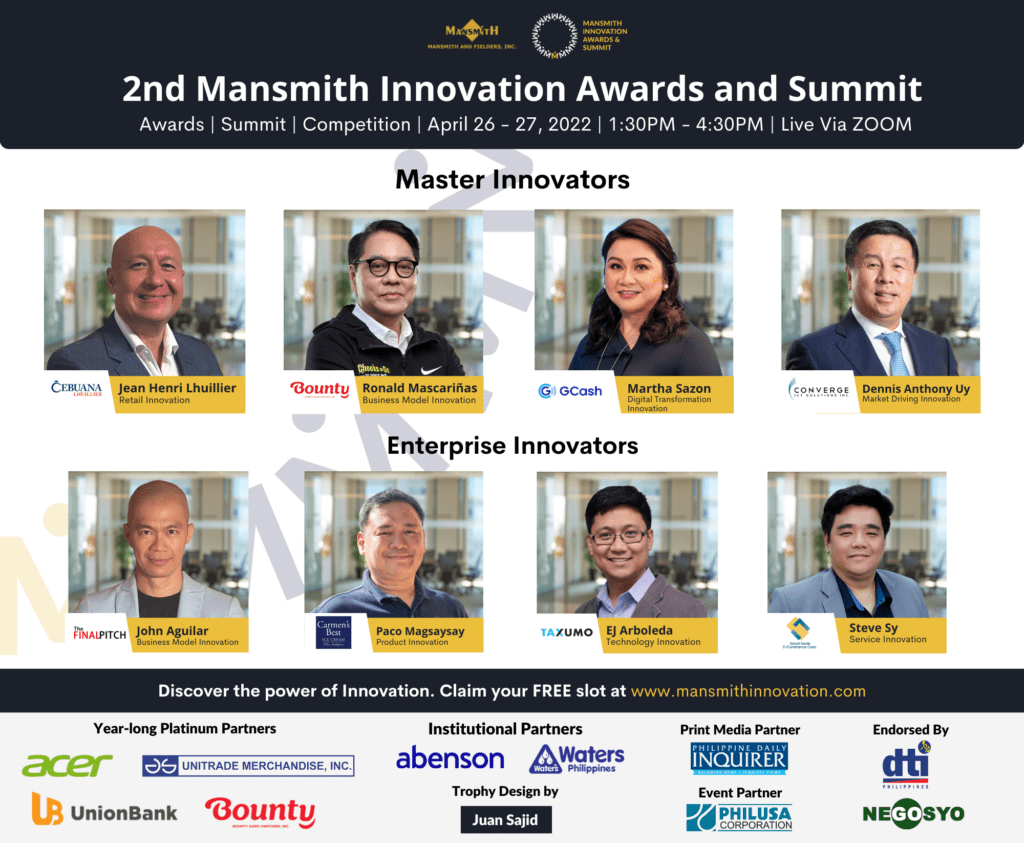
Not long ago, I asked my businessmen-friends why they think companies like Philippine Air Lines (PAL) did not create their own low cost carrier (LCC) before the entry of Cebu Pacific Air. Or even Mercury Drug before the entry of The Generics Pharmacy (now TGP). Or banks before the entry of Bayad Center catering initially to the unbanked customers. Was it the fear of cannibalization? Institutional blindness? Complacency of market leadership?
Cebu Pacific Air now has higher domestic market shares than PAL, Asia’s first airline. TGP now outnumber Mercury 2:1 in terms of the number of retail outlets and is the thought leader in their segment. Bayad Center has more branches than many Philippine banks combined and is a leading bills payment provider nationwide. Many times a new entrant tapped into a white space but eventually attracted more customers by becoming the mainstream.
Protecting financials came out as the most frequently cited answer why market leaders freeze when it comes to innovation. I am sure not all market leaders behave the same way since there is evidence to show that innovation, and not just incremental improvement, can be introduced by incumbent market leaders.
These 10 reasons are:
1) Protecting Financials
The CFO’s role is ensuring healthy financials. This means increasing revenues and profitability, and not necessarily launching innovation, which may be seen as an expense rather than as an investment. To get approval for an innovation endeavor, all new proposals need to be aligned in order for management to make quick and timely decisions. Innovation, especially radical ones, has elements that are new and unfamiliar, hence, it may be hard to predict if it will improve or dilute profitability.
There is after all Plan B, which is to allow other companies to initiate innovation and hopefully the innovator would be willing to sell to the market leader. From a financial perspective, the premium paid for such acquisition may make more sense than the risk of launching its own innovation.
2) Culture of Complacency, Status Quo and Conservative Attitude
Market leaders often become too comfortable with their success. They have succeeded based on what they have done in the past and are no longer as hungry and driven to change their success ‘formula’ for growth, after all, they already have a name and the money.
Some companies are trapped in their traditions and the culture of conformity that is expected from its members. Another is the ‘not-invented-here’ syndrome where new ideas are rejected if not coming from specific people in the company. Still another is the annual strategic planning ritual where companies go out-of-town and do a lot of number-crunching tactical reviews extending what they have been doing as long as possible without actually having anything new innovation ideas as output.
Status quo is the name of their game. Their marketing plan is cut-and-paste type as they do not bother to get new insights or test any new offers. These executives also tend to be conservative about everything.
3) Limited Paradigm, Knowledge and Methodologies A high market share can blind recipients of the need to improve market penetration radically. Also, being better is the greatest enemy of being different, so why bother innovating when customers have accepted and are used to their existing offerings and practices. After all, market leaders are already better in many areas of the market.
Another is the limited work experience of the owners and marketers. The more one is exposed in a particular industry such as consumer goods, the more one will follow the logic of that industry and accept the marketing mix as the only way to differentiate, unmindful of the fact that there are more advanced ways to differentiate.
Many new ideas are ‘one-shot deals’ which came out from eureka moments, but with no specific methodologies or steps to explain or support the creation of another innovation.
Lack of knowledge about how many other industries have innovated and an understanding of the different types of innovation are added factors. While the most common innovation is in product followed by process, seldom do companies evaluate their business models simply because they do not understand the eleven building blocks of a business model. They usually associate anything new as ‘innovation’ even if they are actually simply playing catch up with progressive competition.
4) Arrogance and Pride
When a company is at its peak and has a lot of resources, some of its key officers may think they are indestructible for having high brand loyalty. So instead of innovating, they will just drop prices or launch promotions temporarily when new entrants come in as their own form of defense marketing without bothering to think of other ways to defend their leadership. Without the benefit of a 360 degree view of competitive scenarios, timing as well as what to protect first, market shares and leadership will be compromised in no time.
Dominant players also often take great pride in what got them there; they underestimate the smaller, newer players, forgetting that they were once like them.
5) Focus on other strengths
Market dominance may inhibit strategic thinking, especially of new market spaces. Market leaders have many areas they consider strengths and may just allow a new player to do their thing while they observe how they operate and waste precious time debating how the innovation will affect the company.
6) Industry Conditions especially Speed to Exploit Technology and New Knowledge Availability of new technology online has given rise to many new innovations and many new billionaires. Instead of embracing new technology, incumbents may decide to stretch the use of their old technology hoping the new thing may just be an unsustainable fad.
While some markets have high entry barriers and high start-up costs, there is lack of motivation to innovate as there may be few (if any) new entrants.
7) Lack of an Idea Channel
Employees may have very restricted access to top management or may somehow be limited to what their immediate bosses will endorse or not endorse for management approval, prematurely killing good ideas in the process.
8) Operational Issues
Some companies are affected with many internal inefficiencies that keep them in a perennial trouble shooting crisis. Innovation is then relegated to another timetable.
9) Lack of the right marketing talent in the team
The ability to be innovative and creative is a capability that not all people have. Managers should not only be able to provide directions with the usual planning, organizing and allocating, they should be able to make sense of the fast changing needs and wants of customers.
10) Focus and lack of vision or foresight Major innovations happen when the proponents are able to connect the dots and see a different future. Incumbents, some of whom were innovators once, may have failed to see innovation coming as focus is on operations and efficiency.
Incumbents may have decided to stick to existing market segment leaving newcomers to enter with an innovative offering. This risks new players occupying a white space which may lead them to enter their natural adjacency – the segment of the incumbent.
*************
Learn more about Innovation at the Mansmith Innovation Awards and Summit on April 26-27, 2022! This award seeks to honor Filipinos who have made their mark in their respective industries. They are those who see opportunity where others see roadblocks, the ones who create in times of challenges and the ones who thrive where others have given up. We recognize the talent of these Filipinos who have contributed to the country’s global innovation ranking and paved the way for the improvement of everyone’s lives.
Aside from recognizing their impact on their respective industries and our country, they will also share the case studies of their innovation. Learn about how they spotted their opportunities, what resources they leveraged, and how they overcame the challenges ahead. Register for FREE at bit.ly/2022MIAReg



